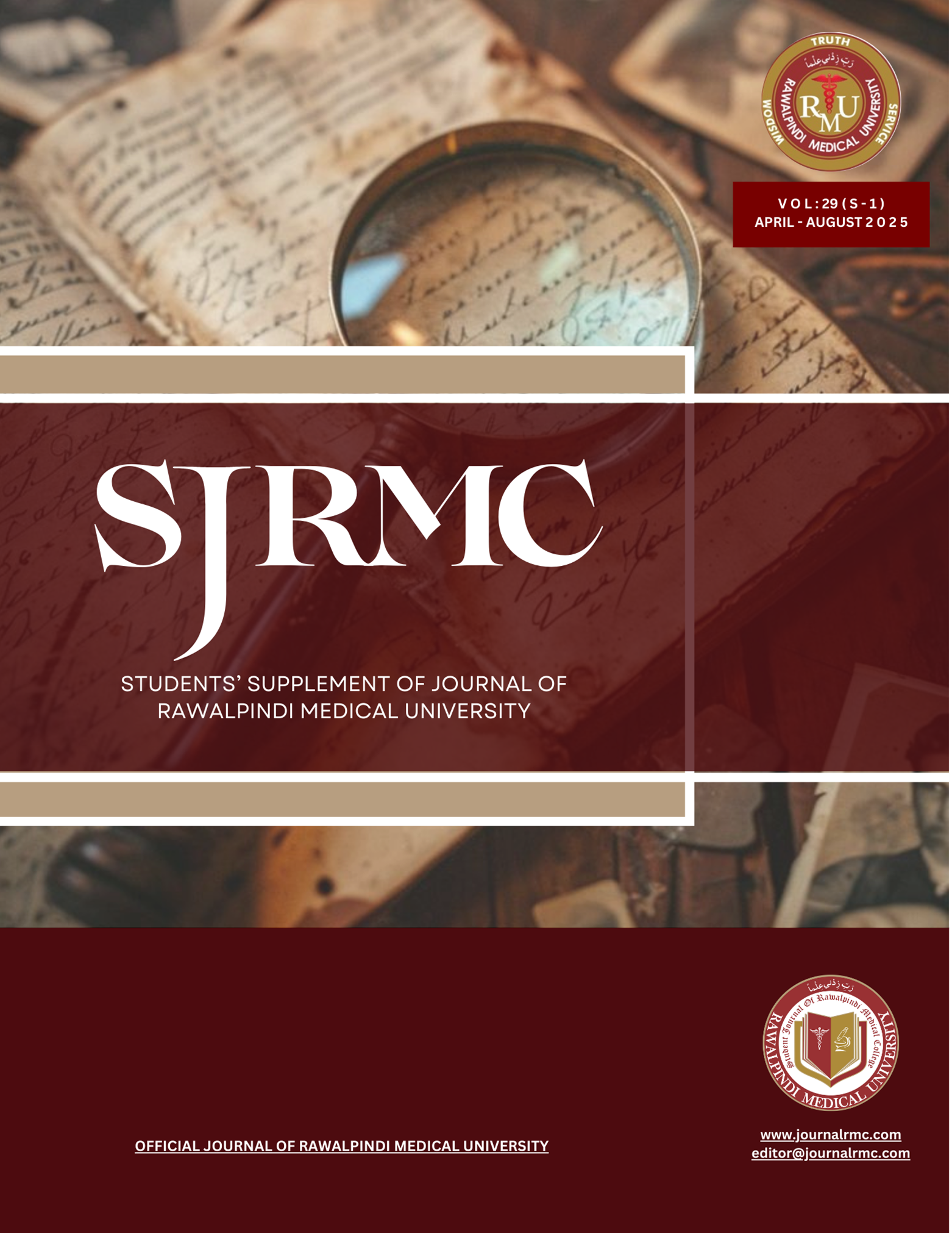Abstract
Introduction: Gastroesophageal reflux disease (GERD) is a common disorder in which stomach contents flow backward into the esophagus, causing heartburn and regurgitation. If left untreated, it may progress to complications such as Barrett’s esophagus and esophageal cancer. Key risk factors include stress, obesity, poor diet, smoking, and NSAID use. GERD affects about 13.98% of the global population and up to 24% in Pakistan. Medical students are particularly vulnerable due to academic stress, sedentary routines, and irregular meals, yet data on this group remain limited. This study aimed to determine the prevalence of GERD, identify risk factors, and assess its impact on medical students’ daily lives.
Objectives: This study aimed to evaluate the prevalence of gastroesophageal reflux disease (GERD) among medical students in Pakistan, assess the key risk factors and the impact of GERD on their daily lives, and recommend appropriate lifestyle modifications to help reduce GERD symptoms.
Methods: A nationwide cross-sectional study was conducted among undergraduate medical students in May 2024. Using Cochran’s formula, the required sample size was 220 (95% CI, 5% error). Non-random convenience sampling was applied, and an electronic pretested questionnaire was distributed across multiple medical institutes. The survey collected demographic data, risk factors, GERD questionnaire responses, and 10-item Cohen Perceived Stress Scale (PSS) scores. IBM SPSS v27 was used for analysis. GERD was defined by a cut-off score ≥8. Perceived stress was categorized as low (0–13), moderate (14–26), or high (27–40). Associations between categorical variables were assessed using Pearson’s chi-square test. Ethical approval was obtained from the Rawalpindi Medical University Review Committee, and informed consent was secured.
Results: A total of 249 responses were analyzed; most participants were female (85.1%), and 75.9% had a healthy BMI (18–25 kg/m²). GERD prevalence was 20.5% (n=51). Moderate and high stress were reported by 71.5% and 12.4% of students, respectively. GERD showed significant associations with midnight snacking (p=0.007), type of exercise (p=0.034), and perceived stress (p=0.025).
Conclusion: GERD is common among medical students and is linked to stress and unhealthy lifestyle habits. Despite potential recall bias and absence of formal clinical diagnosis, this study highlights the need for targeted awareness and preventive strategies to reduce disease burden in future healthcare professionals.
Keywords: Gastroesophageal Reflux; Gastric Acid; Esophagitis; Epidemiology

